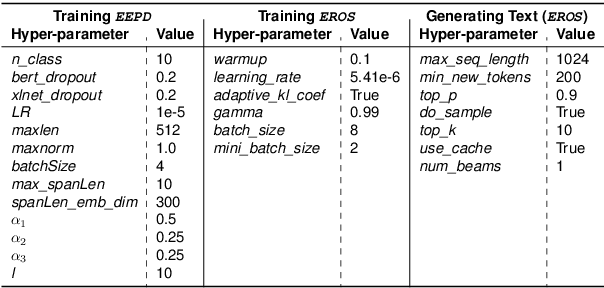EROS: Entity-Driven Controlled Policy Document Summarization
Paper and Code
Feb 29, 2024



Privacy policy documents have a crucial role in educating individuals about the collection, usage, and protection of users' personal data by organizations. However, they are notorious for their lengthy, complex, and convoluted language especially involving privacy-related entities. Hence, they pose a significant challenge to users who attempt to comprehend organization's data usage policy. In this paper, we propose to enhance the interpretability and readability of policy documents by using controlled abstractive summarization -- we enforce the generated summaries to include critical privacy-related entities (e.g., data and medium) and organization's rationale (e.g.,target and reason) in collecting those entities. To achieve this, we develop PD-Sum, a policy-document summarization dataset with marked privacy-related entity labels. Our proposed model, EROS, identifies critical entities through a span-based entity extraction model and employs them to control the information content of the summaries using proximal policy optimization (PPO). Comparison shows encouraging improvement over various baselines. Furthermore, we furnish qualitative and human evaluations to establish the efficacy of EROS.
 Add to Chrome
Add to Chrome Add to Firefox
Add to Firefox Add to Edge
Add to Edge